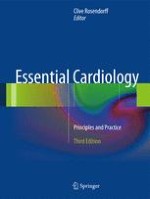2013 | Boek
Over dit boek
Essential Cardiology: Principles and Practice, 3rd Edition, blends molecular, cellular, and physiologic concepts with current clinical practice and provides up-to-date information on all major aspects of cardiovascular disease. Fully revised by an international panel of leading authorities in the field, it is an authoritative resource for cardiologists, internists, residents, and students. The book presents the clinical examination of the patient, including diagnostic testing and cutting-edge radiologic imaging; pathogenesis and treatment of various types of cardiac abnormalities; the needs of special populations, including pregnant, elderly, and renal-compromised patients; cardiovascular gene and cell therapy; and preventive cardiology. It includes new chapters on cardiovascular disease in women; diabetes and the cardiovascular system; and cancer therapy-induced cardiomyopathy. The Third Edition also focuses on the substantial advances in anti-platelet and anticoagulant therapy; new modalities of cardiac imaging; new anti-arrhythmic drugs; and a sophisticated understanding of vascular biology and atherogenesis.
